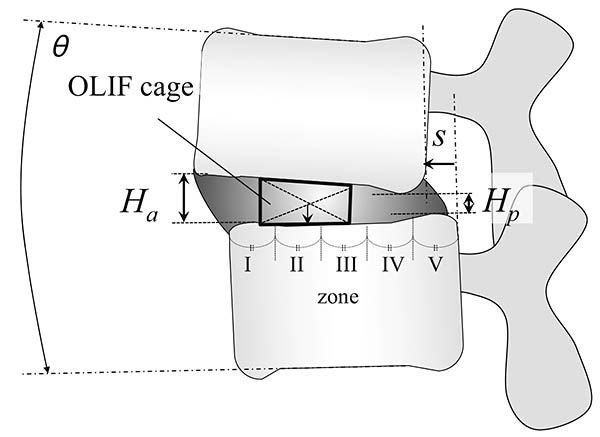- 著者
- Yasuhiro Shiga Sumihisa Orita Kazuhide Inage Jun Sato Kazuki Fujimoto Hirohito Kanamoto Koki Abe Go Kubota Kazuyo Yamauchi Yawara Eguchi Masahiro Inoue Hideyuki Kinoshita Yasuchika Aoki Junichi Nakamura Yusuke Matsuura Richard Hynes Takeo Furuya Masao Koda Kazuhisa Takahashi Seiji Ohtori
- 出版者
- The Japanese Society for Spine Surgery and Related Research
- 雑誌
- Spine Surgery and Related Research (ISSN:2432261X)
- 巻号頁・発行日
- vol.1, no.4, pp.197-202, 2017-10-20 (Released:2017-11-27)
- 参考文献数
- 24
- 被引用文献数
- 22 25
Introduction: Oblique lateral interbody fusion (OLIF) can achieve recovery of lumbar lordosis (LL) in minimally invasive manner. The current study aimed to evaluate the location of lateral intervertebral cages during OLIF in terms of LL correction.Methods: The subjects were patients who underwent OLIF for lumbar degenerative diseases, including lumbar spinal stenosis, spondylolisthesis, and discogenic low back pain. Their clinical outcome was evaluated using visual analogue scale on lower back pain (LBP), leg pain and numbness. The following parameters were retrospectively evaluated on plain radiographic images and computed tomography scans before and at 1 year after OLIF: the intervertebral height, vertebral translation, and sagittal angle. The cage position was defined by equally dividing the caudal endplate into five zones (I to V), and its association with segmental lordosis restoration was analyzed. Subjects were also evaluated for a postoperative endplate injury.Results: Eighty patients (121 fused levels) with lumbar degeneration who underwent OLIF were included. There were no significant specific distribution in preoperative disc pathology such as disc angle, height, and translation. After OLIF, sagittal alignment was improved with an average correction angle of 3.8º at the instrumented segments in a level-independent fashion. All cases showed significant improvement in clinical outcomes, and had improvement in the radiological parameters (P<0.05). A detailed analysis of the cage position showed that the most significant sagittal correction and the most postoperative endplate injuries occurred in the farthest anterior zone (I). Cages with a 12-mm height were associated with more endplate injuries compared with shorter cages (8 or 10 mm).Conclusions: OLIF improves sagittal alignment with an average correction angle of 3.8º at the instrumented segments. We suggest that the optimal cage position for better lordosis correction and the fewest endplate injuries is zone II with a cage height of up to 10 mm.
